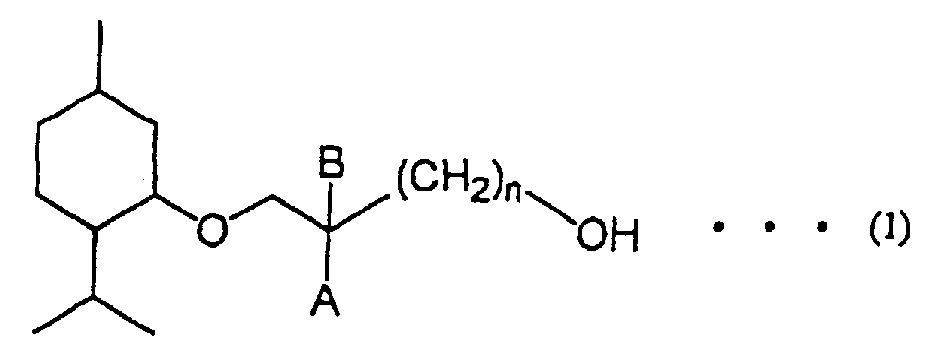Increasing agent for fregrance spreading rate and lasting property and increasing method thereof
A diffusion rate and persistence technology, applied in the formulation of perfume preparations, skin care preparations, chewing gum, etc.
- Summary
- Abstract
- Description
- Claims
- Application Information
AI Technical Summary
Problems solved by technology
Method used
Image
Examples
Embodiment 1 and comparative example 1-3
[0034] Example 1 and Comparative Examples 1-3 (testing the effect of fragrance diffusion rate and persistence of fragrance composition)
[0035] The perfume compositions of Example 1 and Comparative Examples 1-3 as shown in Table 1 were prepared according to common methods. Then, the fragrance diffusion rate and durability of these fragrance compositions were evaluated in the following manner. In order to evaluate the persistence of the fragrance, the affinity of the fragrance was tested.
[0036] (Test method for fragrance diffusion rate and affinity of fragrance composition)
[0037] Place 10.0 mg of the prepared fragrance composition weighed out on filter paper into the bottom of a wide-mouth bottle with a diameter of 40 mm and a height of 50 mm. The bottle was closed and left for 30 minutes to prepare an evaluation sample. When opening the bottle, immediately evaluate the fragrance diffusion rate of the sample in a sensory way. In this open system, then, the sample is allowed ...
Embodiment 2 and comparative example 4
[0044] Example 2 and Comparative Example 4 (test effect of bath composition)
[0045] According to the formula shown in Table 4 below, 100 g of the bath compositions of Example 2 and Comparative Example 4 each containing 1.0% by weight of the perfume composition of Example 1 and Comparative Example 1 were prepared. Then, 20 grams of each of these bathing compositions were dissolved in 180 L of hot water at a temperature of 40-42°C. Experts immediately evaluated the relative scent intensity of these prepared solutions. The fragrance intensity of these solutions was also evaluated after 30 minutes. It was evaluated 3 times by 11 perfume experts with more than 5 years of experience (33 experts in total). This evaluation was performed relative to Comparative Example 4.
[0046] Make up
[0047] (1) Test results of fragrance diffusion rate
[0048] In order to compare the bath composition of Example 2 and Comparative Example 4, the number of experts who felt that the bath com...
Embodiment 3 and comparative example 5
[0054] Example 3 and Comparative Example 5 (test effect of bath composition)
[0055] According to the formula shown in Table 7 below, 100 g of the bathing composition of Example 3 and Comparative Example 5 were each prepared. Then, 20 grams of each of these bathing compositions were dissolved in 180L of hot water at a temperature of 40-42°C. In the same manner as described in Example 2, experts immediately evaluated the relative fragrance intensity of these prepared solutions.
[0056] Make up
[0057] (1) Test results of fragrance diffusion rate
[0058] The number of experts who felt that the fragrance diffusion rate of the bath composition of Example 3 and Comparative Example 5 was high is listed in Table 8 below.
[0059] Example 3
[0060] (2) Test results of fragrance affinity
[0061] The number of experts who felt that the bath compositions of Example 3 and Comparative Example 5 had high fragrance affinity, respectively, are listed in Table 9 below. ...
PUM
 Login to View More
Login to View More Abstract
Description
Claims
Application Information
 Login to View More
Login to View More - R&D
- Intellectual Property
- Life Sciences
- Materials
- Tech Scout
- Unparalleled Data Quality
- Higher Quality Content
- 60% Fewer Hallucinations
Browse by: Latest US Patents, China's latest patents, Technical Efficacy Thesaurus, Application Domain, Technology Topic, Popular Technical Reports.
© 2025 PatSnap. All rights reserved.Legal|Privacy policy|Modern Slavery Act Transparency Statement|Sitemap|About US| Contact US: help@patsnap.com

